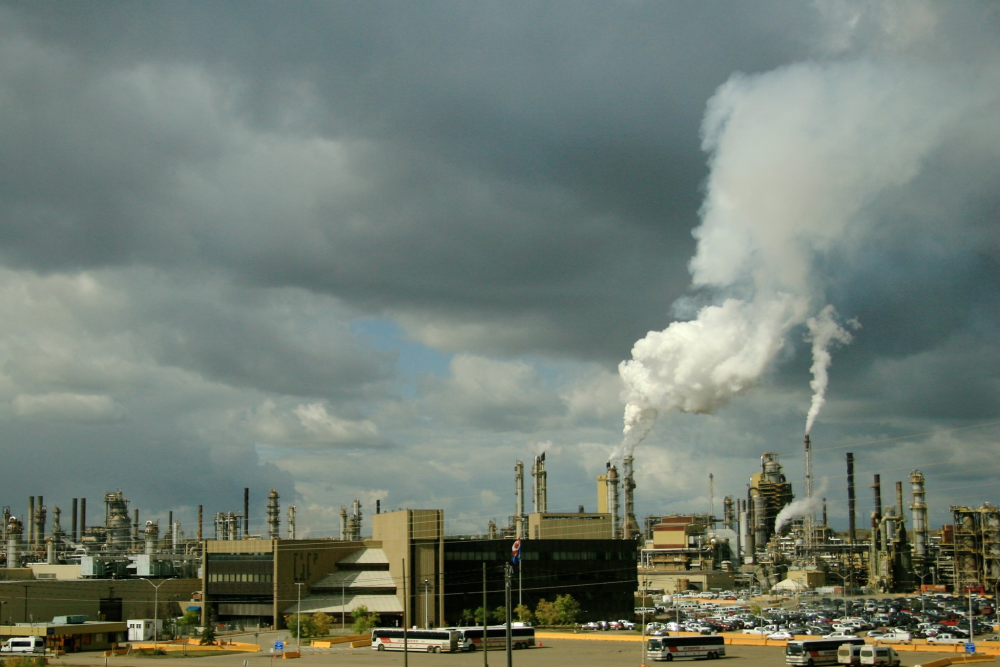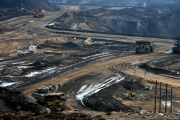In thinking about climate change, it’s crucial to keep in focus the fundamental risks and challenges that it poses to our world.
The Intergovernmental Panel on Climate Change’s assessment report released on Feb. 28 spells it out clearly: “Climate change is a threat to human well-being and planetary health.”
Further delays in concerted action by governments, by corporations – by all of us, really – mean we would “miss a brief and rapidly closing window of opportunity to secure a livable and sustainable future for all,” the United Nations panel report warned.
What does that mean for Canada? And specifically, what are the implications for our oil and gas industry, which is the country’s largest emitter after experiencing significant growth in production and greenhouse gases, or GHGs, since 2005?
Canada’s oilsands producers know they must dramatically reduce emissions as part of the country’s overall effort in the global battle against climate change. That’s why last year they launched the Oilsands Pathways to Net Zero Initiative, in which the six largest producers, accounting for 95 per cent of production, aim to almost eliminate carbon emissions from their extraction processes by 2050 while meeting a series of shorter-term targets.
The oilsands pathways plan represents an important commitment and will require significant investment by the companies themselves to meet their targets. However, the industry efforts will only align with Canada’s 2030 emissions-reduction targets and 2050 net-zero goal if Ottawa mandates such a track.
Natural Resources Minister Jonathan Wilkinson and Environment Minister Steven Guilbeault are due to launch an updated emissions-reduction plan this month that will outline a strategy to meet Canada’s 2030 target of reducing GHGs by 40 per cent to 45 per cent below 2005 levels and its 2050 net-zero goal. The federal plan includes a declining cap on oil industry emissions that will put additional regulatory pressure on oilsands producers.
While the Oilsands Pathways strategy is welcome, it falls short of what is required and rests on some questionable assumptions about long-term demand for Canadian crude.
For example, it expects the federal government to provide significant financing for emissions-reduction projects. Given the strong rebound in oil prices and profits, the companies should be required to finance the investments themselves.
The industry’s plan also fails to align the oilsands sector with Canada’s 2030 target and leaves serious questions about its ability to achieve net-zero emissions by 2050.
The alliance says its members can reduce emissions by 22 megatonnes from 2019 levels by 2030. This is not good enough.
Based on data from Environment and Climate Change Canada, a 22 Mt reduction would leave the oilsands sector’s emissions at 61 Mt, or 74 per cent higher than 2005 levels. (While ECCC pegs the sector’s 2019 emissions at 83 Mt, the industry uses a figure of 68 Mt in 2019. A 22 Mt reduction even from the lower industry figure would still leave the sector’s GHGs 31 per cent higher in 2030 than in 2005.)
However, if these reductions are combined with larger, easier-to-achieve emission reductions elsewhere in the oil and gas industry, a 45-per-cent decline in emitted carbon could be achieved by the sector as a whole by 2030.
 The oilsands producers have not published a plan that details how their 2030 target or net-zero vision could be achieved, as the Pembina Institute notes in a report, Getting on Track, released March 1. They have provided some guidance that suggests a four-pronged approach: process improvements that save energy and reduce emissions; adoption of as-yet-untested technology; a major network of carbon capture use and sequestration, or CCUS, assets; and the purchase of credits, including nature-based ones, to offset what cannot be eliminated.
The oilsands producers have not published a plan that details how their 2030 target or net-zero vision could be achieved, as the Pembina Institute notes in a report, Getting on Track, released March 1. They have provided some guidance that suggests a four-pronged approach: process improvements that save energy and reduce emissions; adoption of as-yet-untested technology; a major network of carbon capture use and sequestration, or CCUS, assets; and the purchase of credits, including nature-based ones, to offset what cannot be eliminated.
The alliance is proposing to build a CCUS network that would feed carbon dioxide captured at eight facilities into a pipeline to be sequestered underground. Companies want both federal and provincial government support for the project, but Ottawa has vowed to end subsidies for the industry.
Another challenge is that CCUS adoption is not happening at the pace needed to achieve a net-zero target. Oilsands companies will need to design, win approval, finance and build the projects by 2030 if they are to establish a credible pathway.
For all of these reasons, ambitious government policy needs to drive industry action. A rising carbon tax that applies to a growing proportion of oilsands production should help spur investments. A cap on emissions that provides a predictable target and clear compliance costs can support investment decisions.
Given the reality of climate change, any pathway for emissions reduction in the Canadian oilsands sector should assume a reduction in demand that would force producers to shutter their highest-cost operations.
The Russian invasion of Ukraine has prompted the world to search anew for secure energy supplies. Long-term energy security lies with renewable sources – geopolitical powers have no jurisdiction over the sun and wind. In the face of a climate emergency, energy security must be consistent with a responsible approach to climate change and the imperative of reducing carbon emissions.







